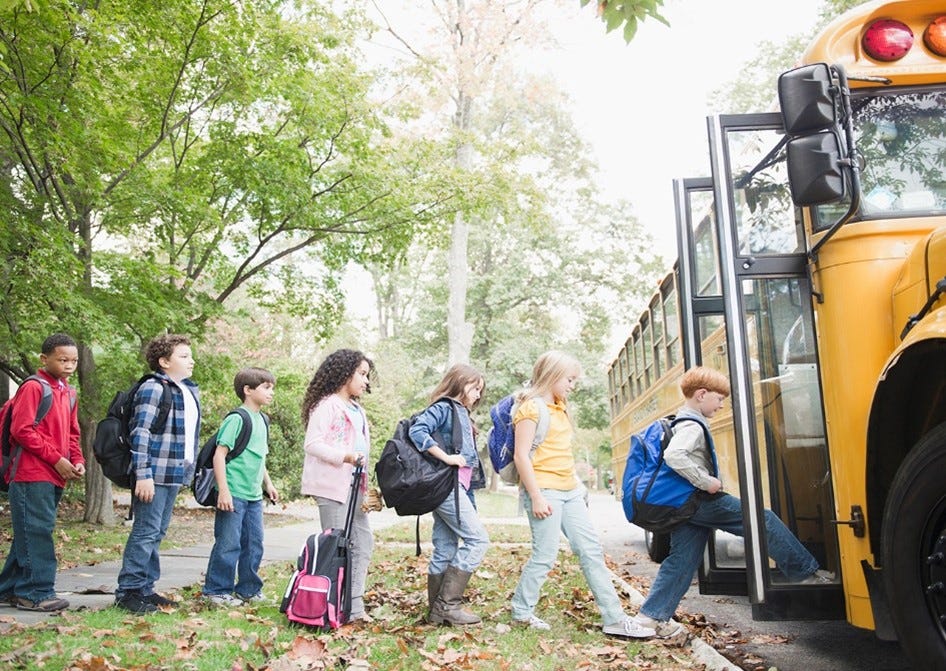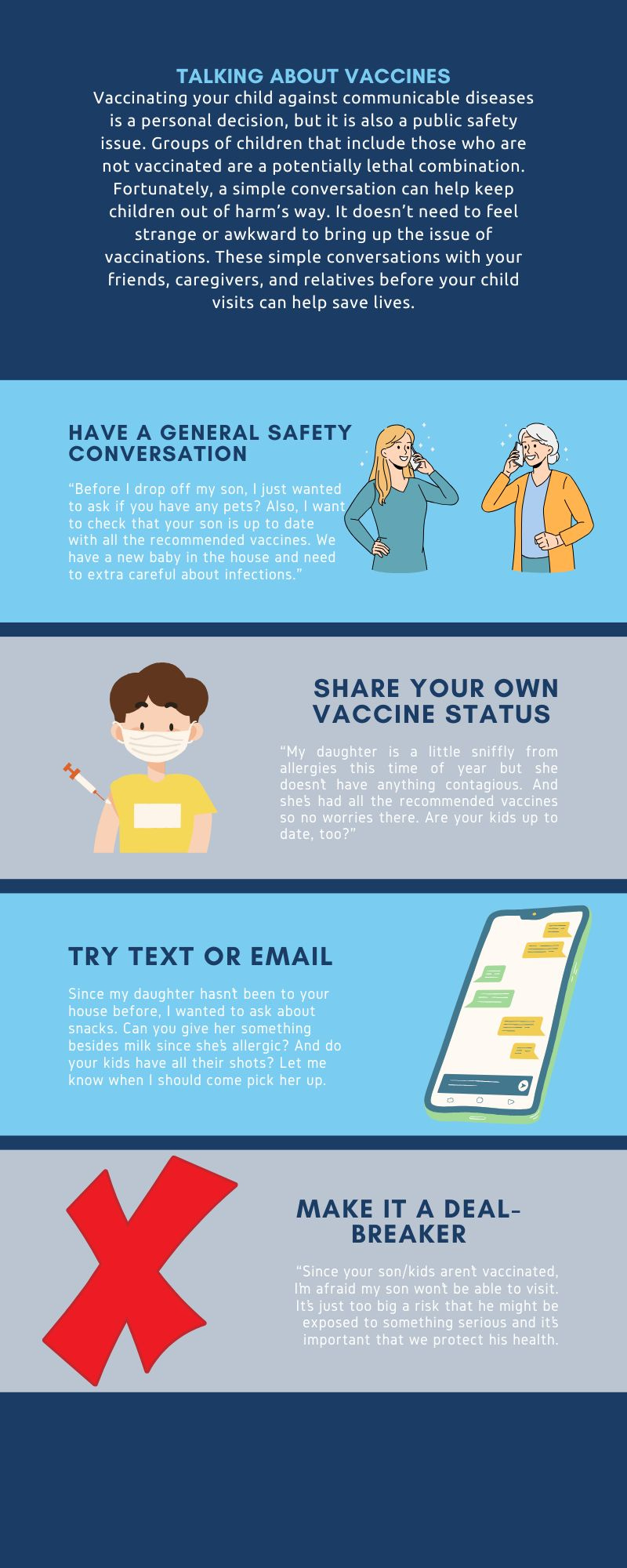Parents—would you let your child visit a friend’s house where a loaded gun was left lying around? Dumb question, right? Yet every day in America we let millions of children risk picking up something just as deadly—preventable diseases caused by failing to vaccinate children against common illnesses.
For the past four years, child vaccination rates have been declining. As a result, the incidence of many preventable childhood diseases such as measles, varicella (chicken pox), rubella (German measles) and (pertussis) whooping cough is on the rise. And the numbers are alarming. According to the Centers for Disease Control (CDC), “As of Nov 9, there were more than 23,500 cases of whooping cough reported so far this year. That’s far and above the roughly 5,000 cases confirmed in all of 2023.” (The Hill) Statistics for measles are similarly grim, with the World Health Organization (WHO) reporting that “The number of measles cases around the world rose by 20% in 2023 compared with 2022, leading to an estimated 10.3 million cases.” The impact of lower vaccination rates for measles is especially grim; an estimated 107,500 people, mostly children younger than 5 years old, died from measles in 2023 (NBC News).
Whooping cough and measles vaccines are part of a recommended protocol that the CDC developed in 1995 and updates each year (2025 schedule). Until 2020, U.S. vaccination rates for diseases on that list held steady at 95% or above. For the past four years, however, rates have fallen, often significantly. Nationally, the vaccination rate for measles among children entering kindergarten fell to 93% in 2024. That 2% difference may seem small, yet multiple studies have confirmed that 95% is the threshold vaccination rate to establish herd immunity for communicable disease.
Also, vaccination rates vary widely by state. The national averages for some childhood diseases may be at threshold, but that does little to protect children in many states where rates are notably lower. In Idaho, less than 82% of kindergartners have received the recommended doses of MMR (measles, mumps, rubella) vaccine. Parents today may think of measles as little more than an irritating rash, perhaps because they have never seen it; measles was eliminated from the U.S. in 2000. But the virus is far more than annoying for young children, among whom it can cause high fever, pneumonia, and even swelling of the brain (encephalitis). Two doses of the MMR vaccine are 97% effective in preventing disease, yet the CDC reports that 280,000 kindergartners are now unprotected from measles. This is alarming on many levels, but perhaps most important to note is that measles is shockingly contagious—9 in 10 unvaccinated people exposed to the virus will get measles. As vaccination rates have declined, outbreaks have returned, with 16 reported in 2024 so far.
Whooping cough outbreaks are increasing at an even faster rate than measles, with almost five times as many cases reported in 2024 as in 2023. Vaccines are highly effective at preventing pertussis and should be administered as part of the DTaP (diphtheria, tetanus, and pertussis) protocol. The CDC recommends these shots be given at 2,4,6, and 15-18 months, plus one between 4-6 years. Unlike measles, immunity to whooping cough wears off, which means that teens should get a booster shot between 11-12 and every 10 years after that. Vaccination rates for teens have fallen to 89% nationally so that children for whom immunity is wearing off are increasingly at risk for contracting the disease.
TOO COOL FOR SCHOOL
At this point you may be wondering how so many kindergartners and teens remain unvaccinated given that all 50 states and Washington D.C. have laws requiring certain vaccines for students to attend school. Furthermore, most states align their requirements with recommendations from the CDC (Centers for Disease Control). However, all states allow exemptions. Primarily these exist for children who cannot be vaccinated for health reasons. In addition, many states allow exemptions for religious and or philosophical (personal) reasons. Allowances for non-medical exemptions vary widely by state, and you won’t be surprised to learn that they have been on the rise along with disease outbreaks. Furthermore, vaccine requirements apply to public schools only. The percent of children attending non-public schools has grown to 17% nationwide, while another 7% are homeschooled or attend virtual school. This means almost 1 in 4 school-aged children fall outside state vaccination requirements.
It is hard to imagine a worse environment for government officials to disparage vaccine efficacy, push conspiracy theories about their dangers, or even rescind requirements for them, yet here we are confronted with all three. Important as it is for responsible politicians, pundits, and public health activists to denounce these developments, advocacy without action creates a doom loop of despair. What can concerned parents do to keep their kids safe?
FIX IT FIX IT FIX IT
Step one is knowing who is at greatest risk. Parents of very young children must be especially vigilant in avoiding exposure to unvaccinated people. Infants cannot receive a first dose of vaccines for certain diseases such as chicken pox, measles, and whooping cough until they are at least 3 months old. For example, babies cannot get their first dose of the MMR vaccine until 12 months and are not fully protected until their second dose at 4-6 years. Whooping cough is also dangerous, as babies do not develop full immunity until their third DTaP at 6 months, and can develop severe complications if they contract the illness. If you have older children, it’s important to know the vaccination status of their friends and cousins who might infect your infant.
Even without infants in the household, parents should be aware of the vaccine status of their children’s playmates. And the only way to know is to ask. Many people feel uncomfortable having what they suppose will be difficult conversations with other parents, many of whom they may know only from brief hellos at the bus stop. But you don’t need to feel awkward about protecting your child, nor must conversations with other parents be confrontational. Try using one of these scripts before sending your child to visit a family you don’t know well.
Finally, educate your family, friends, and neighbors about the real and present danger of rising rates of unvaccinated children. A good place to start is making others aware of just how spectacularly lifesaving vaccines have been and still are. Few Americans today remember the many deadly diseases that afflicted children until the 1960s when vaccinations became available. Rather than try to counter unfounded beliefs about vaccine dangers, talk about vaccine success stories such as polio. In the mid-1950s. polio epidemics killed or paralyzed more than half a million people worldwide each year. In the United States alone, there were 21,000 cases in 1952; by 1993, there was only a single case. Similarly, the measles vaccine has saved nearly 94 million lives over the past 50 years.
Public health is a public responsibility, but each of us has a role to play.
Think globally; act locally.






